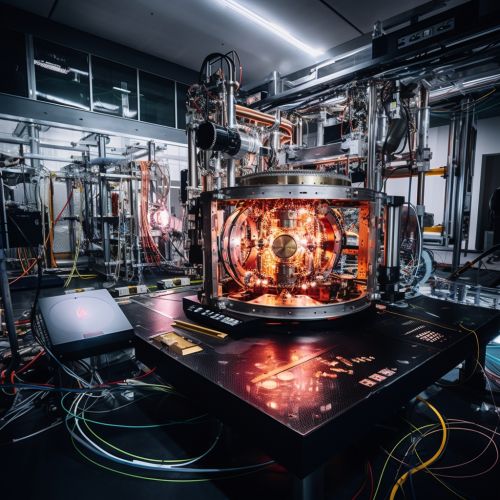Quantum Computing with Quantum Error Correction Algorithms
Introduction
Quantum computing is a rapidly evolving field that leverages the principles of quantum mechanics to perform computational tasks. Unlike classical computers, which use bits as their smallest unit of data, quantum computers use quantum bits, or qubits. Qubits can exist in multiple states at once, a property known as superposition, and can be entangled, meaning the state of one qubit can be dependent on the state of another, regardless of the distance between them. These properties allow quantum computers to perform complex calculations at unprecedented speeds. However, qubits are highly susceptible to errors due to their fragile nature and interaction with their environment, a problem known as decoherence. To address this, researchers have developed quantum error correction algorithms.


Quantum Error Correction
Quantum error correction is a set of techniques designed to protect quantum information from errors due to decoherence and other quantum noise. Quantum error correction is essential for the practical realization of quantum computers, as it helps to maintain the integrity of qubits during computation.
One of the most well-known quantum error correction algorithms is the Shor's algorithm. This algorithm, proposed by Peter Shor in 1995, is designed to correct errors in quantum bits and is known for its ability to factor large numbers more efficiently than classical algorithms.
Another important quantum error correction algorithm is the Steane code, named after Andrew Steane who discovered it in 1996. The Steane code is a type of quantum error correction code that uses seven qubits to protect a single logical qubit. It is capable of correcting any single-qubit error, making it a valuable tool in maintaining the integrity of quantum information.
Quantum Error Correction Algorithms
Quantum error correction algorithms are complex procedures that aim to correct errors that occur during quantum computation. These algorithms are crucial to the successful operation of a quantum computer, as they help to maintain the delicate state of qubits and protect against decoherence.
Shor's Algorithm
Shor's algorithm is a quantum algorithm that can factor large numbers more efficiently than the best known classical algorithms. It was the first algorithm to demonstrate the potential of quantum computers to solve certain types of problems more efficiently than classical computers. Shor's algorithm also includes a procedure for quantum error correction, which is essential for the practical implementation of quantum computers.
Steane Code
The Steane code is a quantum error correction code that uses seven qubits to encode a single logical qubit. This code is capable of correcting any single-qubit error, including both bit flip and phase flip errors. The Steane code is an example of a CSS code, named after its inventors, Calderbank, Shor, and Steane.
Surface Codes
Surface codes are a type of topological quantum error correction code. They are currently the most promising approach to quantum error correction, due to their high threshold for errors and their compatibility with fault-tolerant quantum computation. Surface codes operate by encoding quantum information across a two-dimensional lattice of qubits, allowing for the detection and correction of errors through the measurement of stabilizer operators.
Quantum Error Correction in Practice
In practice, implementing quantum error correction in a quantum computer is a significant challenge. The process requires precise control over qubits and the ability to perform complex operations. Despite these challenges, several experimental demonstrations of quantum error correction have been achieved.
In 2015, a team of researchers at the University of Maryland successfully implemented a small instance of the Steane code in a trapped-ion quantum computer. This was the first demonstration of a quantum error correction code in a fault-tolerant architecture.
More recently, in 2020, Google's Quantum AI team announced that they had achieved a key milestone in quantum error correction. They demonstrated the ability to detect and correct errors in a surface code, a major step towards the realization of a fault-tolerant quantum computer.
Future of Quantum Error Correction
The field of quantum error correction is still in its early stages, and much work remains to be done. As quantum computers become more powerful and capable of handling larger numbers of qubits, the need for effective quantum error correction algorithms will only increase.
One of the key challenges in this field is to develop error correction codes that are both efficient and capable of correcting a wide range of errors. In addition, the practical implementation of these codes in a quantum computer is a significant technical challenge.
Despite these challenges, the progress made in this field is promising. With continued research and development, quantum error correction will play a crucial role in the realization of practical quantum computers.
